Doreen (Simmon) Pavlik Photo Collection
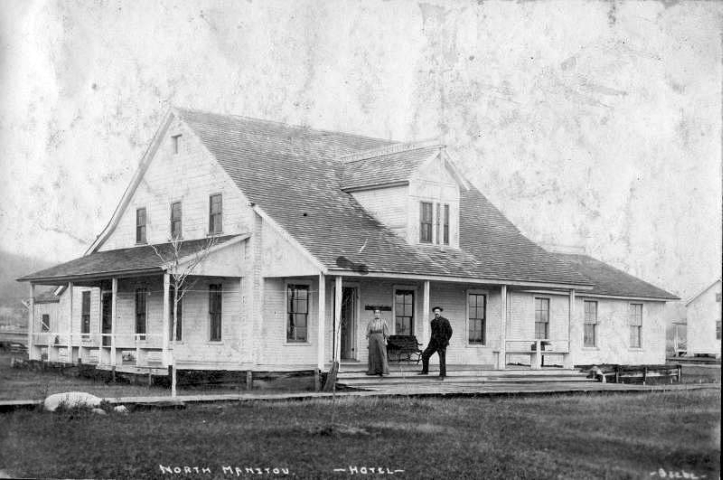 Hotel, North Manitou Island, ca. 1910s. The former residence of U.S. Life-saving Service keeper Daniel Buss was remodeled as a hotel and dining room. The building served as a lodging facility for island visitors until it was destroyed by fire in 1953.
Hotel, North Manitou Island, ca. 1910s. The former residence of U.S. Life-saving Service keeper Daniel Buss was remodeled as a hotel and dining room. The building served as a lodging facility for island visitors until it was destroyed by fire in 1953.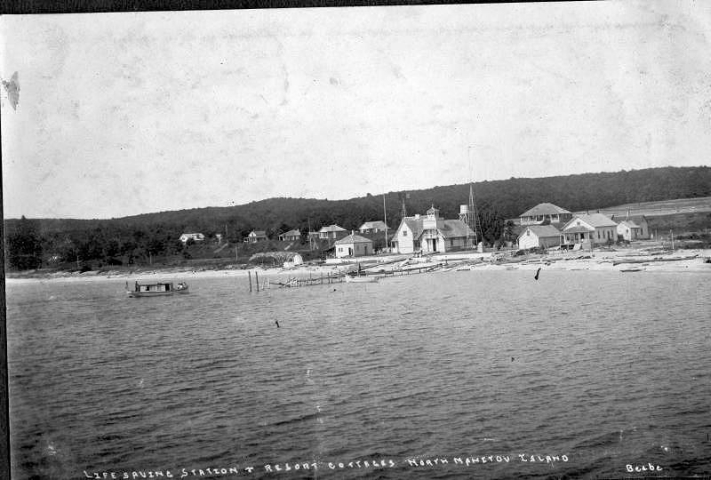 The U.S. Life Saving Service Station and 'Cottage Row' resort cottages on North Manitou Island.
The U.S. Life Saving Service Station and 'Cottage Row' resort cottages on North Manitou Island.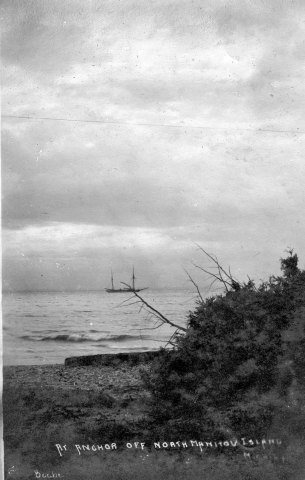 At anchor off North Manitou Island.
At anchor off North Manitou Island.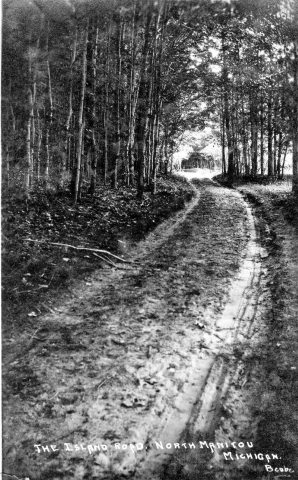 The main road on North Manitou Island.
The main road on North Manitou Island. Roadway on North Manitou Island.
Roadway on North Manitou Island.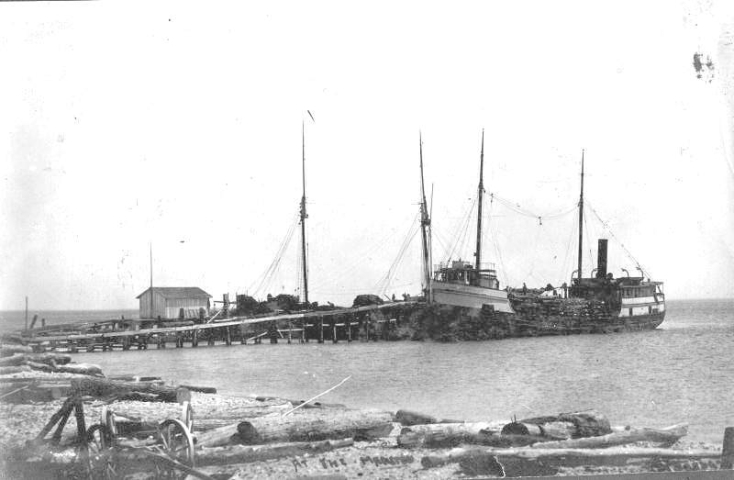 Loading logs, probably the south-end dock on North Manitou Island.
Loading logs, probably the south-end dock on North Manitou Island.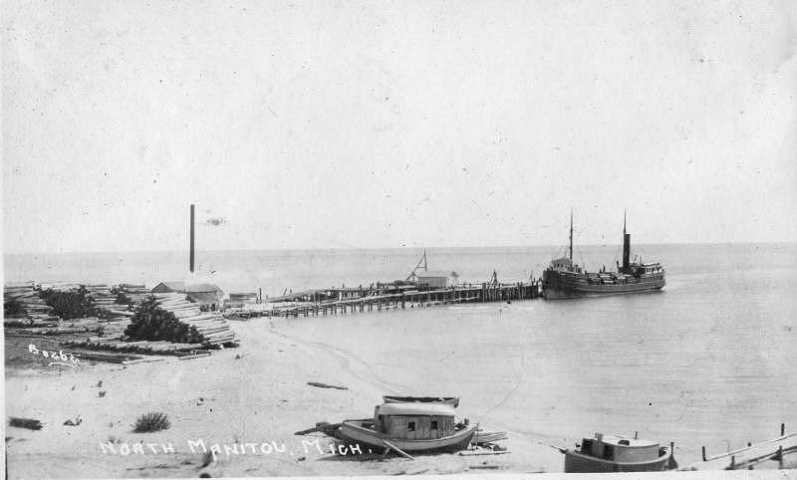 The Edward Buckley hand-loading logs, probably the south-end dock on North Manitou Island - another view.
The Edward Buckley hand-loading logs, probably the south-end dock on North Manitou Island - another view.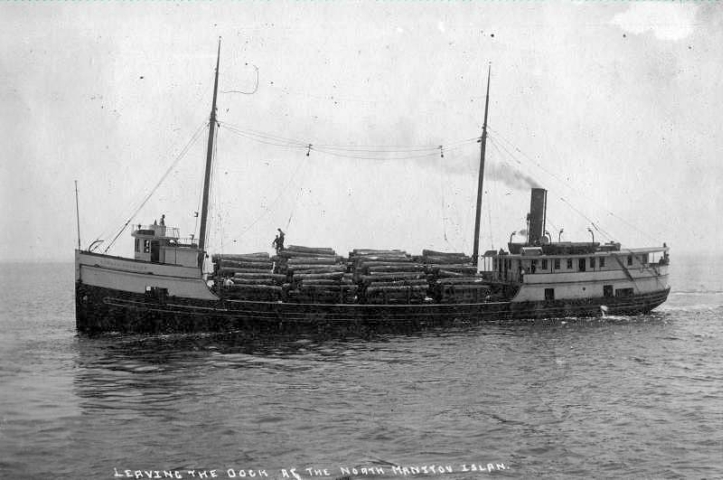 During the 1909 season, the masted steam barge 'Edward Buckley' was steadily employed by the Empire Lumber Company, carrying logs from North Manitou to the company's mill at Empire, and finished lumber from there to Chicago.
During the 1909 season, the masted steam barge 'Edward Buckley' was steadily employed by the Empire Lumber Company, carrying logs from North Manitou to the company's mill at Empire, and finished lumber from there to Chicago.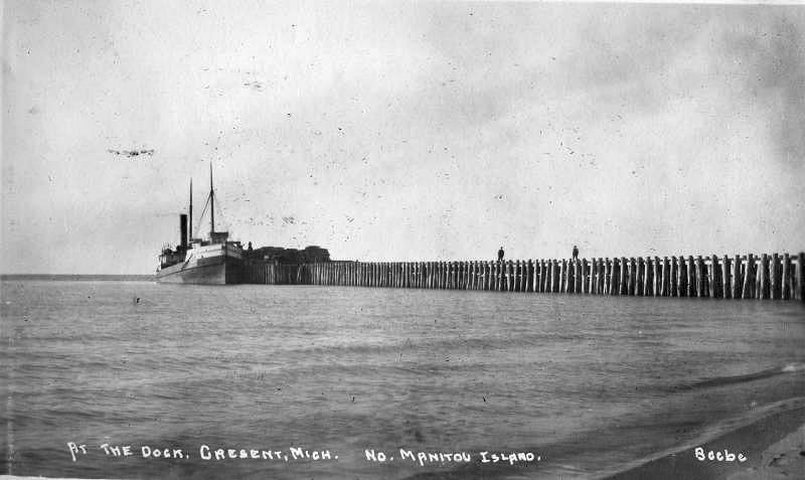 The Edward Buckley loading at the Crescent dock.
The Edward Buckley loading at the Crescent dock.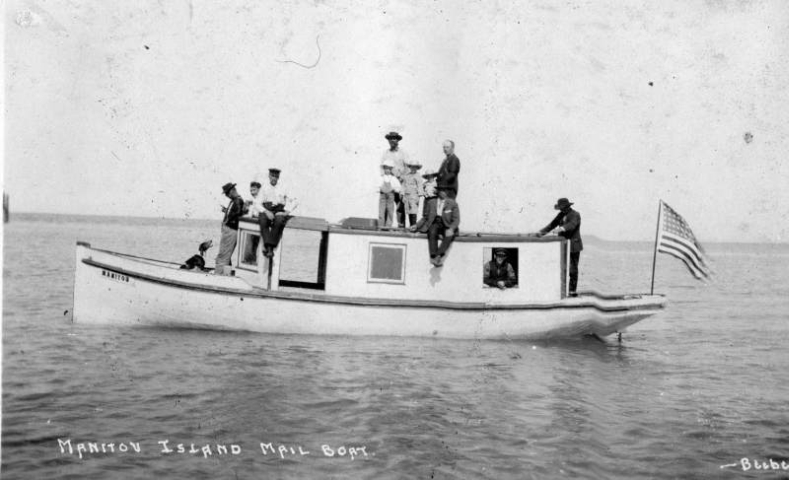 North Manitou Island mail boat 'Manitou,' possibly John Swenson's boat on its maiden voyage. John Swenson owned his own boat, which he used for fishing, and for transporting freight between the island and Leland. In 1901, Swenson took the contract to carry mail between Leland and North Manitou Island.
North Manitou Island mail boat 'Manitou,' possibly John Swenson's boat on its maiden voyage. John Swenson owned his own boat, which he used for fishing, and for transporting freight between the island and Leland. In 1901, Swenson took the contract to carry mail between Leland and North Manitou Island.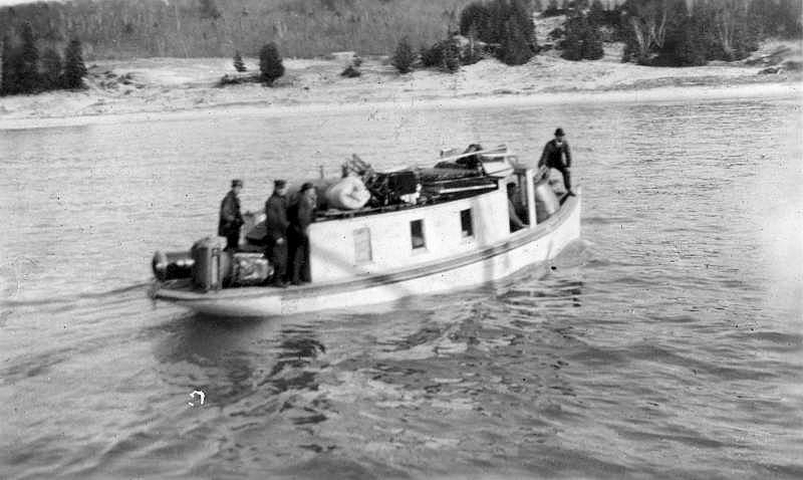 Probably John Swenson's fishing/mail boat carrying the freight (circa 1901).
Probably John Swenson's fishing/mail boat carrying the freight (circa 1901).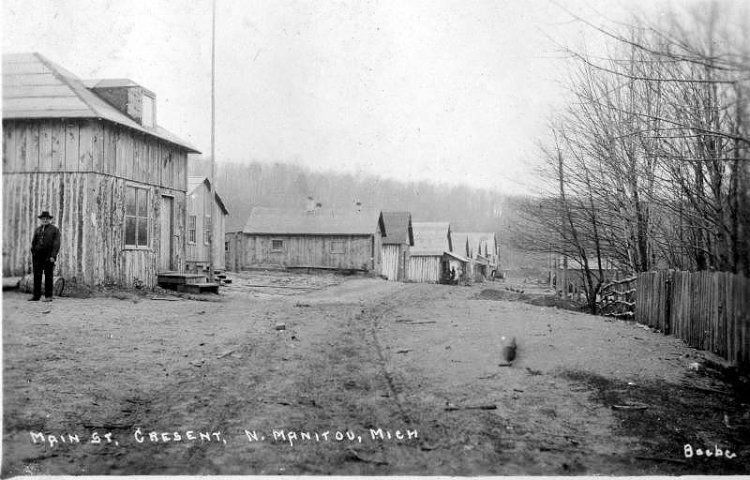 The short-lived community of Crescent developed on the western side of the island around an extensive dock and wharf built by the Smith & Hull Lumber Company, and a steam-powered lumber mill operated by A.J. White & Son. The company town flourished during 1908-1915, but thereafter vanished from the island landscape almost as quickly as it had appeared.
The short-lived community of Crescent developed on the western side of the island around an extensive dock and wharf built by the Smith & Hull Lumber Company, and a steam-powered lumber mill operated by A.J. White & Son. The company town flourished during 1908-1915, but thereafter vanished from the island landscape almost as quickly as it had appeared.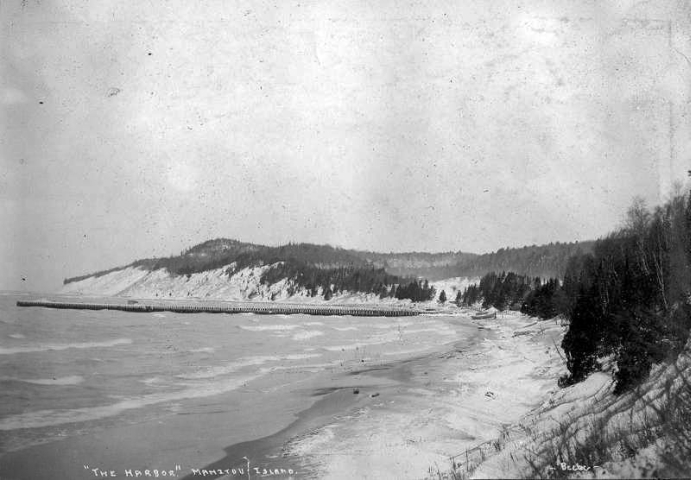 The Crescent dock on North Manitou Island's west side.
The Crescent dock on North Manitou Island's west side.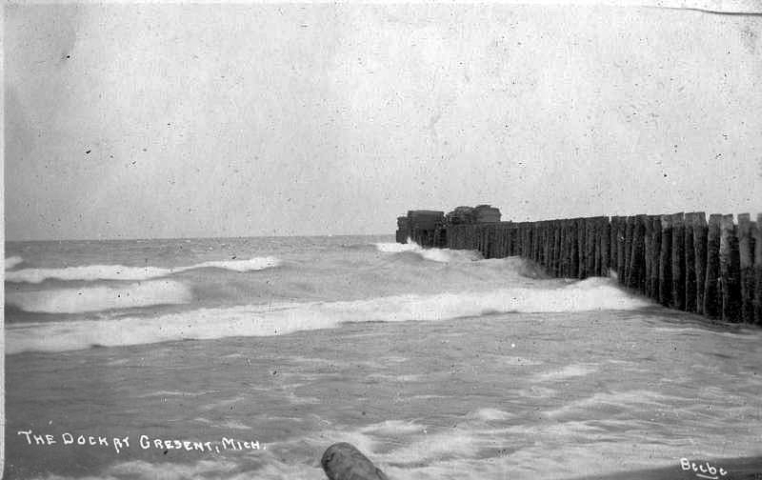 The Crescent dock on North Manitou Island's west side - rough weather.
The Crescent dock on North Manitou Island's west side - rough weather.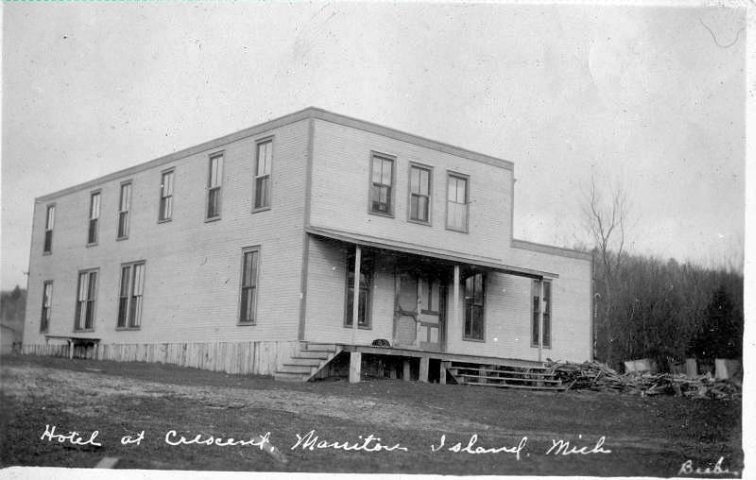 In 1906, Peter Swanson leased part of his North Manitou property to the partnership of Franklyn H. Smith and William C. Hull of Traverse City. On this parcel, the Smith & Hull Lumber Company developed the lumber camp known as Crescent. The complex included a saw mill, several commercial and quasi-public buildings including a school, post office, hotel, dock, and housing for workers.
In 1906, Peter Swanson leased part of his North Manitou property to the partnership of Franklyn H. Smith and William C. Hull of Traverse City. On this parcel, the Smith & Hull Lumber Company developed the lumber camp known as Crescent. The complex included a saw mill, several commercial and quasi-public buildings including a school, post office, hotel, dock, and housing for workers.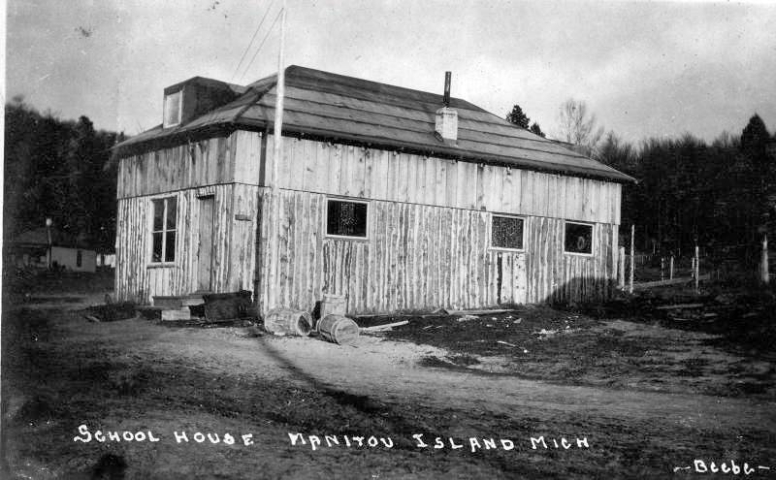 Smith & Hull centered their operation near the location of what was formerly a village called Aylsworth. Here they completed the construction of a six-hundred-foot dock in 1908. At the dock location, which the named Crescent, they developed a new pier and wharf, storage yards, and housing for workers. The community had a hotel and a general store, as well as a saloon, and a schoolhouse that also functioned as a church on Sundays.
Smith & Hull centered their operation near the location of what was formerly a village called Aylsworth. Here they completed the construction of a six-hundred-foot dock in 1908. At the dock location, which the named Crescent, they developed a new pier and wharf, storage yards, and housing for workers. The community had a hotel and a general store, as well as a saloon, and a schoolhouse that also functioned as a church on Sundays.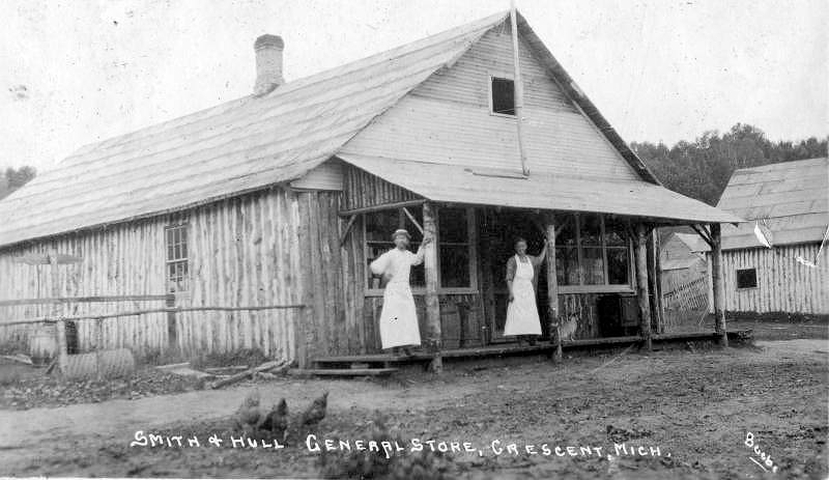 The Smith & Hull general store at Crescent, on North Manitou Island.
The Smith & Hull general store at Crescent, on North Manitou Island.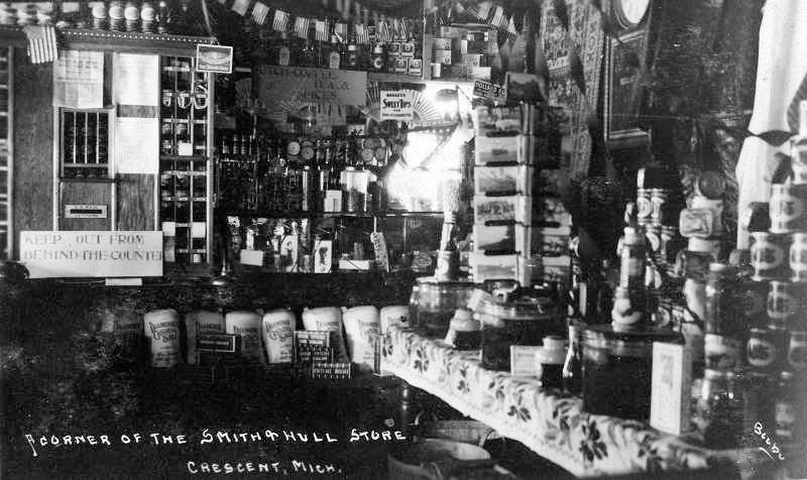 Inside the Smith & Hull general store at Crescent on North Manitou Island - 'If they ain't got it, ya probably don't need it.'
Inside the Smith & Hull general store at Crescent on North Manitou Island - 'If they ain't got it, ya probably don't need it.'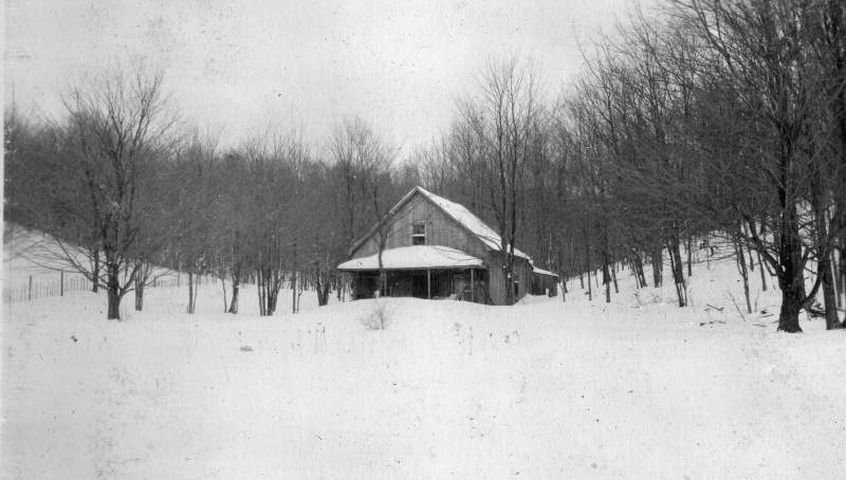 Unknown
Unknown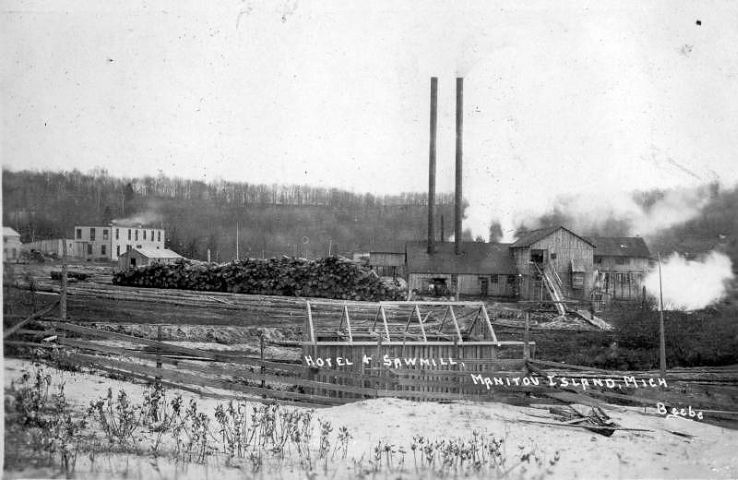 The Smith & Hull saw mill at Crescent, with part of the village in the background.
The Smith & Hull saw mill at Crescent, with part of the village in the background.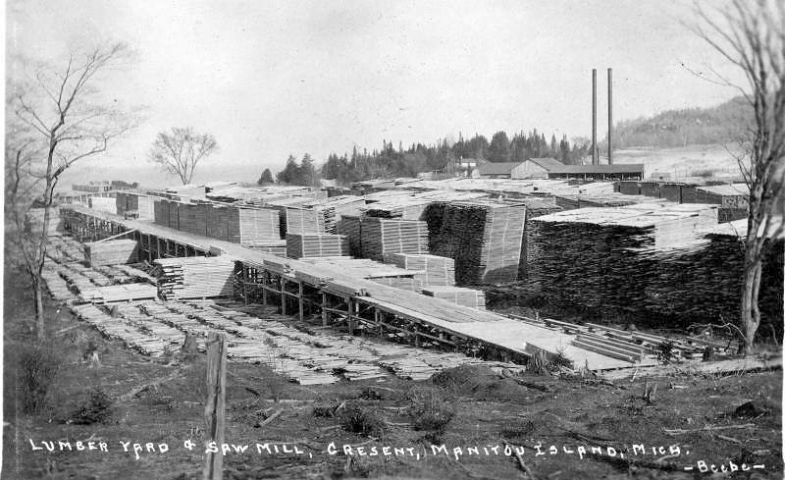 Finished lumber at the Smith & Hull sawmill on North Manitou Island.
Finished lumber at the Smith & Hull sawmill on North Manitou Island.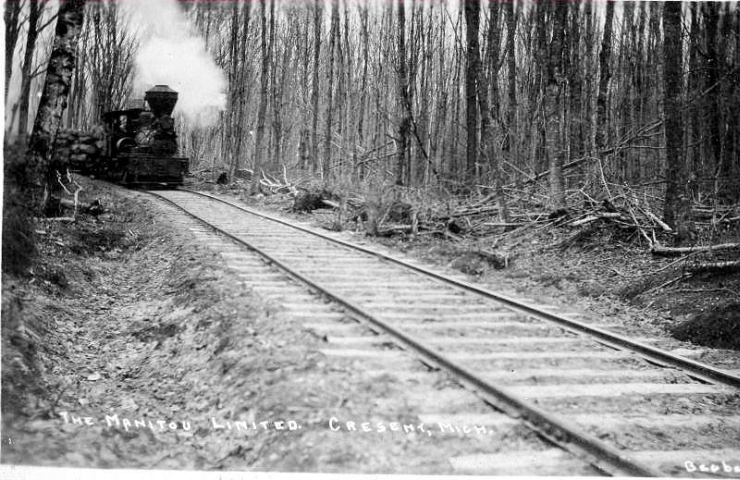 The Crescent post office opened on North Manitou Island on September 21, 1908. The following spring, Smith & Hull constructed a six-mile narrow-gauge railroad in the northwestern corner of the island to facilitate the transportation of timber to the dock. The system was equipped with a 28-ton Shay engine and twelve Russell logging cars.
The Crescent post office opened on North Manitou Island on September 21, 1908. The following spring, Smith & Hull constructed a six-mile narrow-gauge railroad in the northwestern corner of the island to facilitate the transportation of timber to the dock. The system was equipped with a 28-ton Shay engine and twelve Russell logging cars.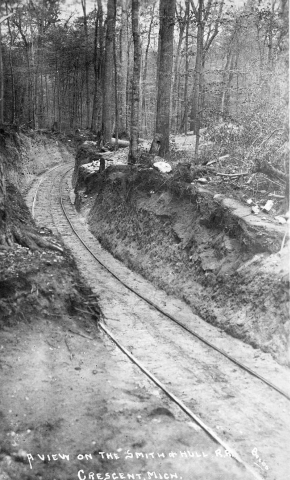 The Smith & Hull logging railroad bed cut through the high country on North Manitou Island's northwest side.
The Smith & Hull logging railroad bed cut through the high country on North Manitou Island's northwest side.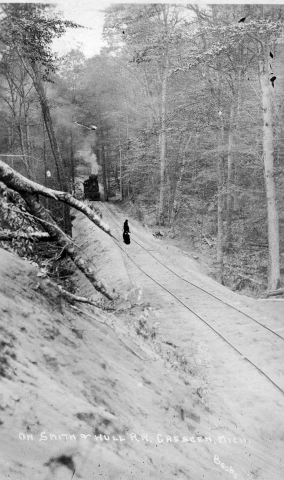 Coming through the woods - a view of the Smith & Hull narrow-guage logging railroad.
Coming through the woods - a view of the Smith & Hull narrow-guage logging railroad.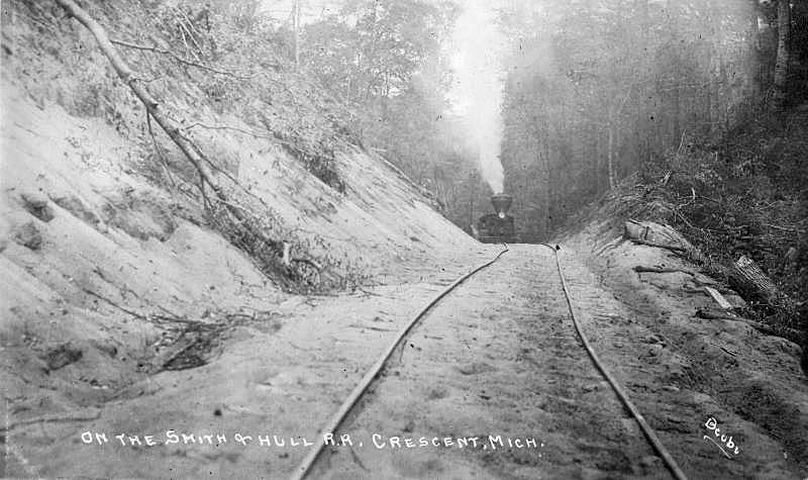 The Shay logging locomotive was specially designed by a former lumberman, Ephraim Shay. Unlike standard steam locomotives, the heavy little engines, sometimes called sidewinders or stemwinders, were driven by direct gearing to each and every wheel, which enabled them to climb the steepest grades, swing around hairpin curves and negotiate frail temporary tracks, while hauling incredibly heavy loads from the woods to the mill.
The Shay logging locomotive was specially designed by a former lumberman, Ephraim Shay. Unlike standard steam locomotives, the heavy little engines, sometimes called sidewinders or stemwinders, were driven by direct gearing to each and every wheel, which enabled them to climb the steepest grades, swing around hairpin curves and negotiate frail temporary tracks, while hauling incredibly heavy loads from the woods to the mill.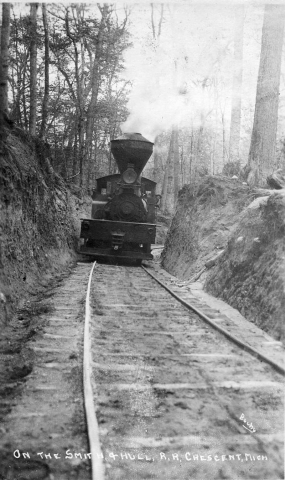 Shay Steam Engine No.3 - the Smith & Hull logging railroad on North Manitou Island was sometimes called 'The Manitou Limited' (Circa 1910).
Shay Steam Engine No.3 - the Smith & Hull logging railroad on North Manitou Island was sometimes called 'The Manitou Limited' (Circa 1910).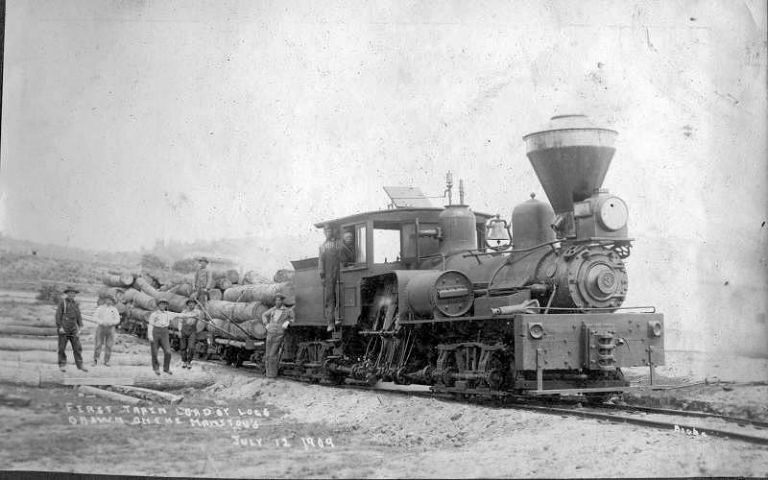 An interesting view of the heavy, powerful little 'No. 3' showing the gearing system that drove her, and the heavy loads she could pull.
An interesting view of the heavy, powerful little 'No. 3' showing the gearing system that drove her, and the heavy loads she could pull. Smith & Hull steam crane - North Manitou Island".
Smith & Hull steam crane - North Manitou Island".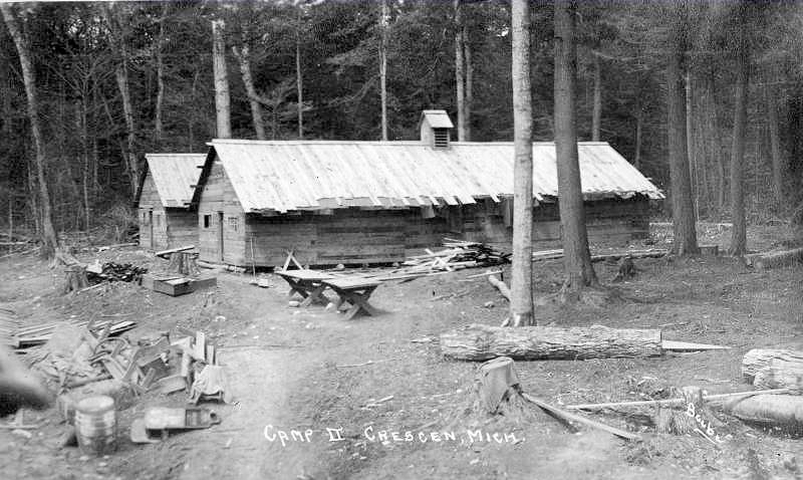 Smith & Hull wood choppers camp, near Crescent on North Manitou Island.
Smith & Hull wood choppers camp, near Crescent on North Manitou Island.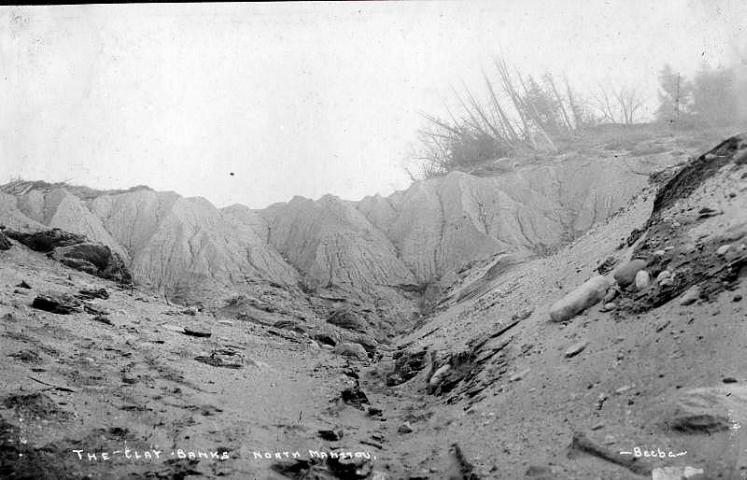 North Manitou Island has prominent areas of dune activity along its southwest coast, the dunes being superposed on bluffs of clay or gravel.
North Manitou Island has prominent areas of dune activity along its southwest coast, the dunes being superposed on bluffs of clay or gravel.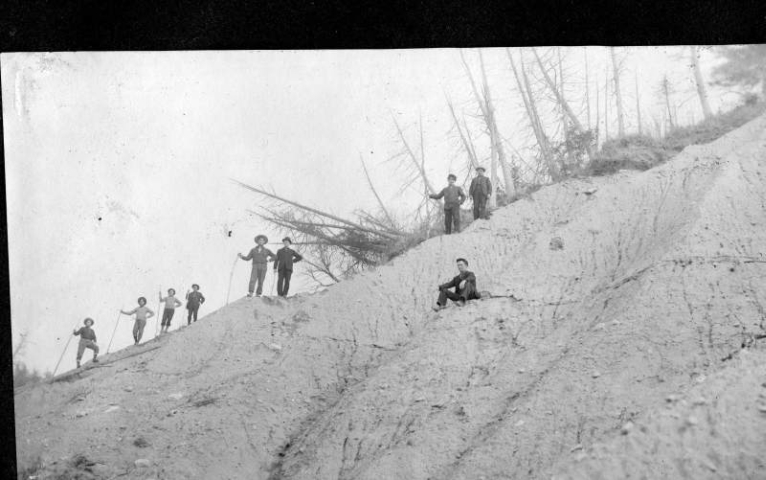 Another view of North Manitou's clay banks.
Another view of North Manitou's clay banks.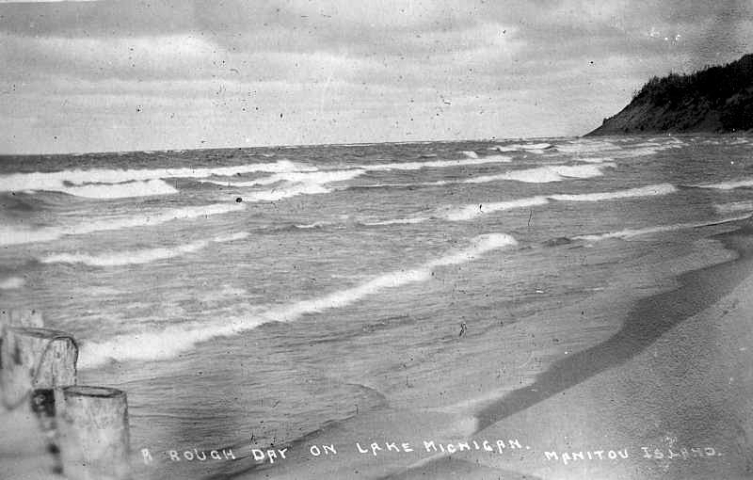 Heavy surf at the Crescent dock on North Manitou Island.
Heavy surf at the Crescent dock on North Manitou Island.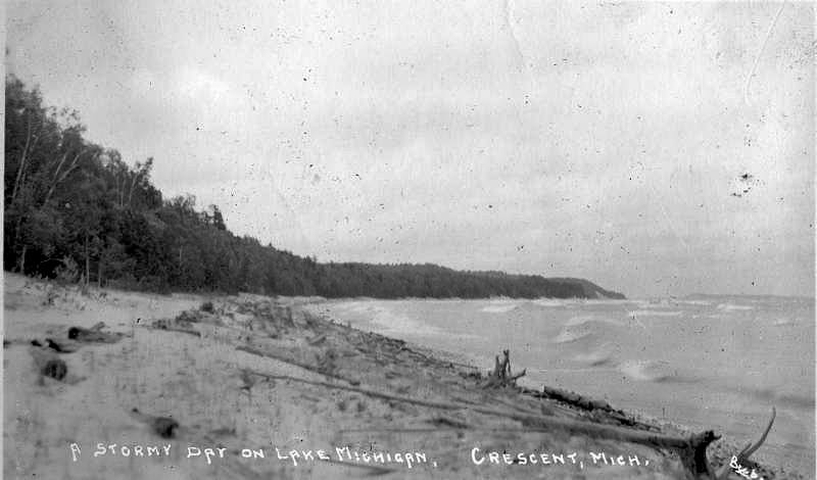 Looking south from the Crescent dock on North Manitou Island on a stormy day.
Looking south from the Crescent dock on North Manitou Island on a stormy day.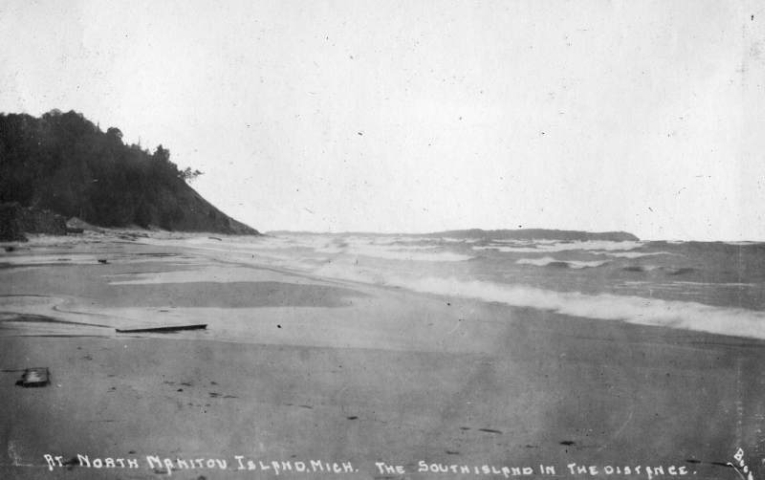 Another view looking south from the Crescent dock on North Manitou Island, with South Manitou in the distance.
Another view looking south from the Crescent dock on North Manitou Island, with South Manitou in the distance.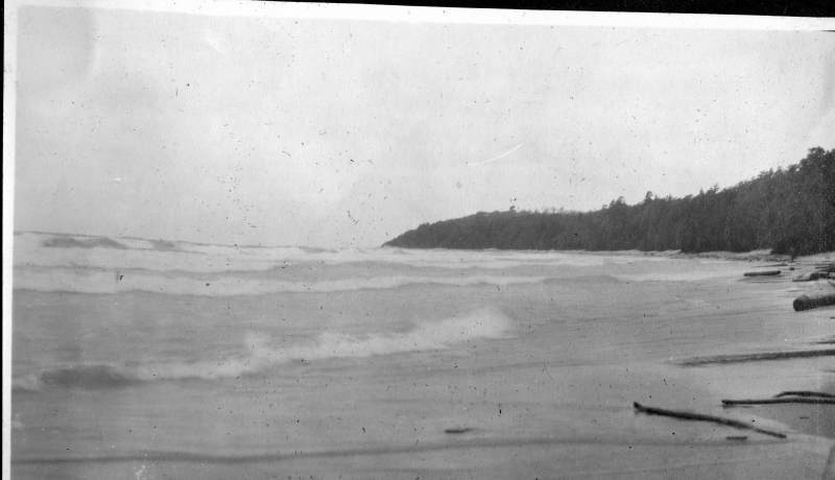 A view to the north during heavy weather from North Manitou Island's Crescent dock.
A view to the north during heavy weather from North Manitou Island's Crescent dock.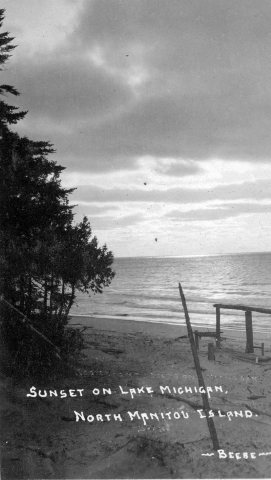 North Manitou Island sunset - looking west from near the Crescent dock.
North Manitou Island sunset - looking west from near the Crescent dock.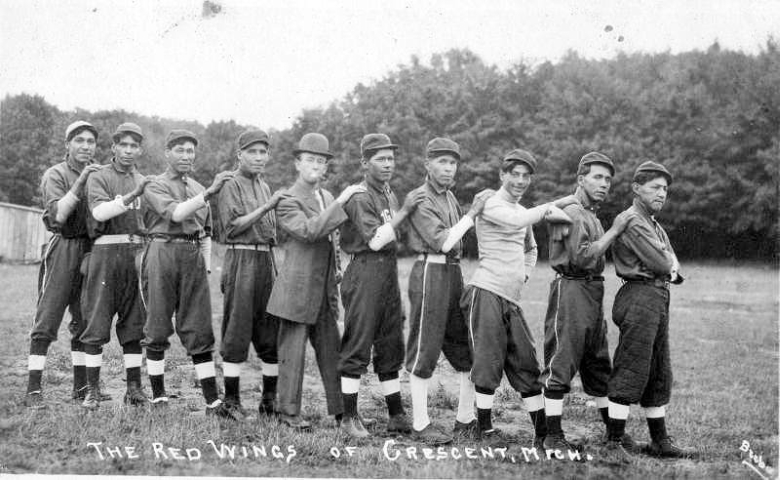 The North Manitou Island men's baseball team, Crescent, ca. 1908-1915. During the early 1910s Crescent had an ethnically diverse population, with at least two baseball teams, one of which was composed of Native Americans.
The North Manitou Island men's baseball team, Crescent, ca. 1908-1915. During the early 1910s Crescent had an ethnically diverse population, with at least two baseball teams, one of which was composed of Native Americans.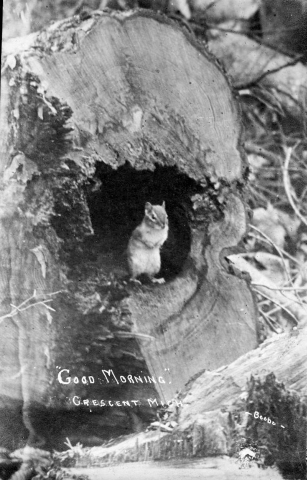 'Good Morning' from North Manitou Island - one of the island's infamous 'micro-bears.'
'Good Morning' from North Manitou Island - one of the island's infamous 'micro-bears.' The Smith & Hull general store at Crescent, on North Manitou Island.
The Smith & Hull general store at Crescent, on North Manitou Island. An interesting view of the heavy, powerful little 'No. 3' showing the gearing system that drove her, and the heavy loads she could pull.
An interesting view of the heavy, powerful little 'No. 3' showing the gearing system that drove her, and the heavy loads she could pull. Inside the Smith & Hull general store at Crescent on North Manitou Island - 'If they ain't got it, ya probably don't need it.'
Inside the Smith & Hull general store at Crescent on North Manitou Island - 'If they ain't got it, ya probably don't need it.' Unknown
Unknown Probably John Swenson's fishing/mail boat carrying the freight (circa 1901).
Probably John Swenson's fishing/mail boat carrying the freight (circa 1901).